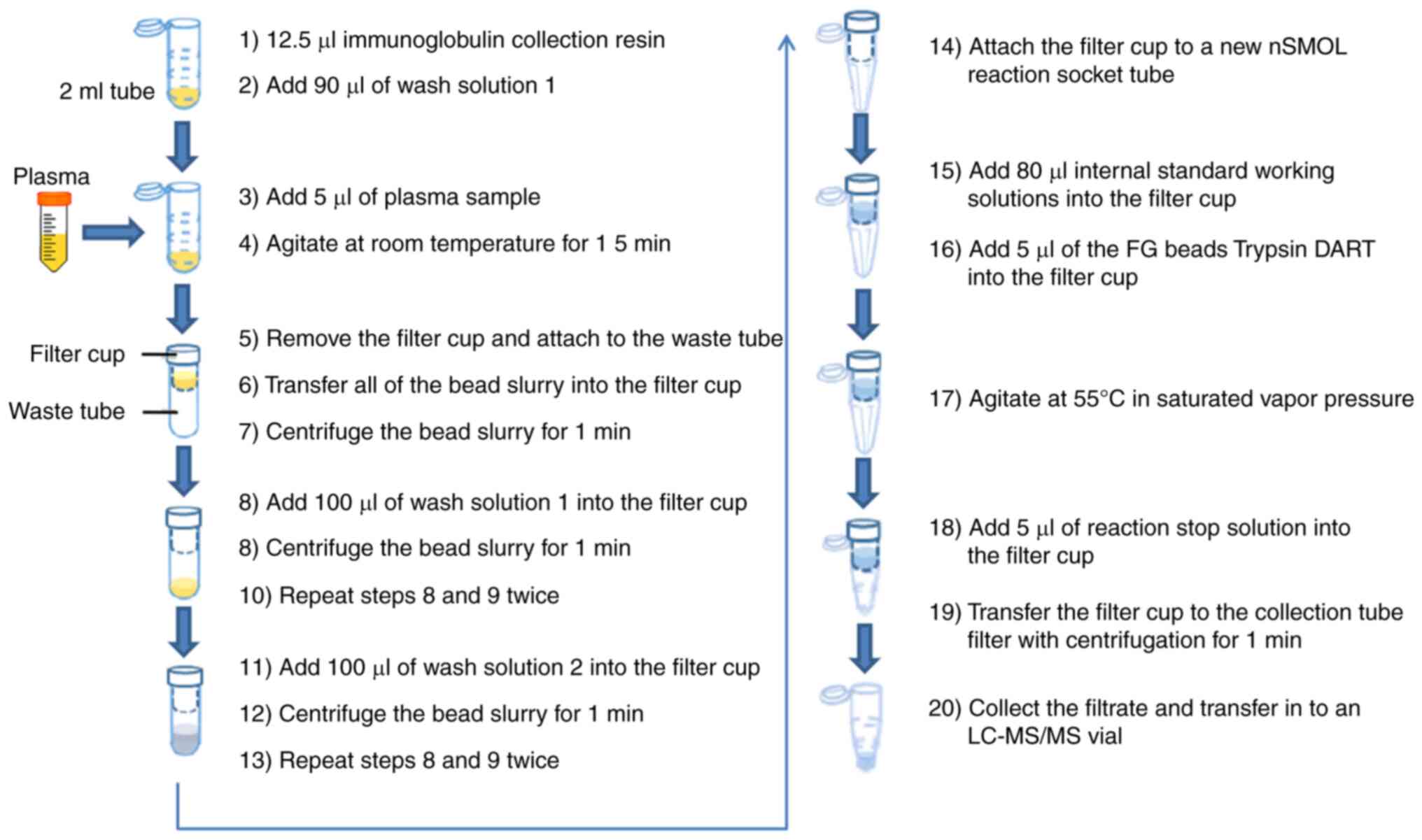A fully validated LC‑MS/MS method for quantifying bevacizumab in plasma samples from patients with NSCLC and its implications in therapeutic drug monitoring
- Authors:
- Published online on: March 22, 2024 https://doi.org/10.3892/ol.2024.14356
- Article Number: 223
-
Copyright: © Li et al. This is an open access article distributed under the terms of Creative Commons Attribution License.
Metrics:
Total
Views: 0 (Spandidos Publications: | PMC Statistics:
)
Total PDF Downloads: 0 (Spandidos Publications: | PMC Statistics:
)
Abstract
Given the increasing use of bevacizumab in combinatorial drug therapy for a multitude of different cancer types, there is a need for therapeutic drug monitoring to analyze the possible correlation between drug trough concentration, and therapeutic effect and adverse reactions. An ultra‑performance liquid chromatography tandem‑mass spectrometry method was then developed and validated to determine bevacizumab levels in human plasma samples. Chromatographic separation was achieved on a Shimadzu InertSustainBio C18 HP column, whereas subsequent mass spectrometric analysis was performed using a Shimadzu 8050CL triple quadrupole mass spectrometer equipped with an electro‑spray ionization source in the positive ion mode. In total, three multiple reaction monitoring transitions of each of the surrogate peptides were chosen with ‘FTFSLDTSK’ applied as the quantification peptide whereas ‘VLIYFTSSLHSGVPSR’ and ‘STAYLQMNSLR’ were designated as the verification peptides using the Skyline software. This analytical method was then fully validated, with specificity, linearity, lower limit of quantitation, accuracy, precision, stability, matrix effect and recovery calculated. The linearity of this method was developed to be within the concentration range 5‑400 µg/ml for bevacizumab in human plasma. Subsequently, eight patients with non‑small cell lung cancer (NSCLC) were recruited and injected with bevacizumab over three periods of treatment to analyze their steady‑state trough concentration and differences. To conclude, the results of the present study suggest that bevacizumab can be monitored in a therapeutic setting in patients with NSCLC.











